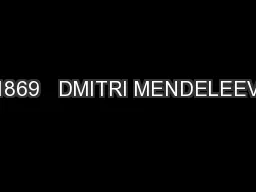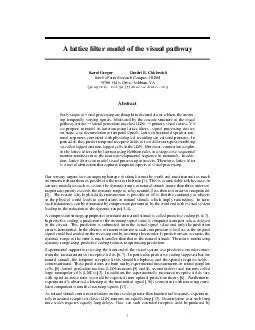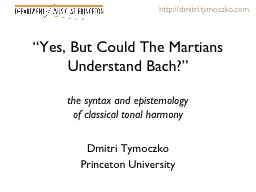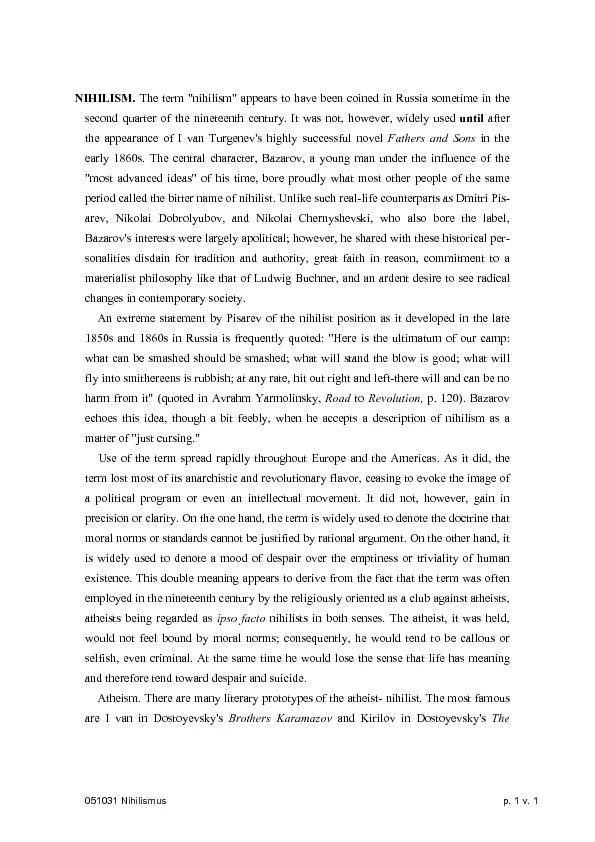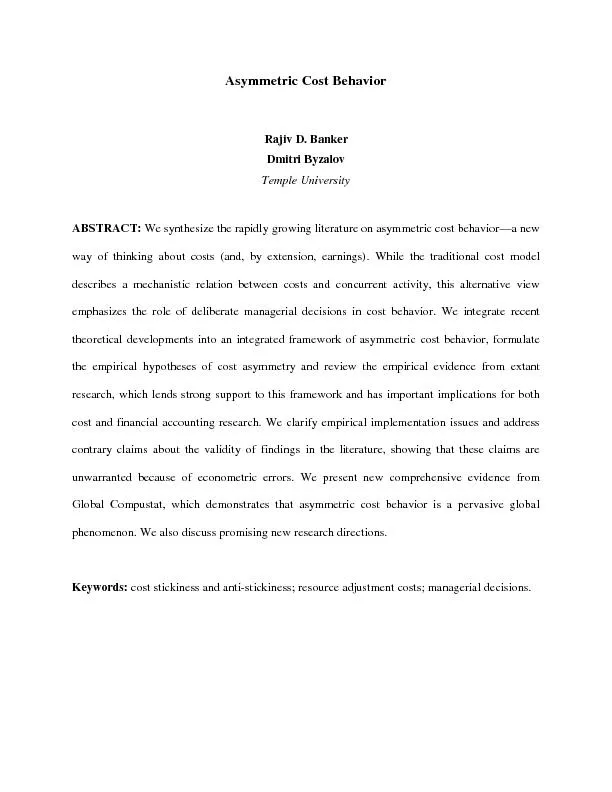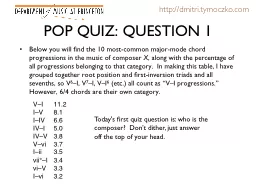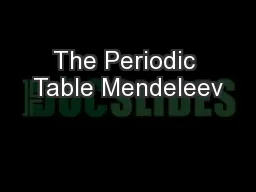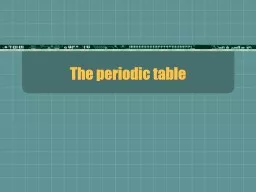PPT-1869 DMITRI MENDELEEV
Author : alexa-scheidler | Published Date : 2015-11-24
Arranged the elements by increasing atomic mass and noticed properties repeat regularly Left a space if an element didnt belong in a particular column THE PERIODIC
Presentation Embed Code
Download Presentation
Download Presentation The PPT/PDF document "1869 DMITRI MENDELEEV" is the property of its rightful owner. Permission is granted to download and print the materials on this website for personal, non-commercial use only, and to display it on your personal computer provided you do not modify the materials and that you retain all copyright notices contained in the materials. By downloading content from our website, you accept the terms of this agreement.
1869 DMITRI MENDELEEV: Transcript
Download Rules Of Document
"1869 DMITRI MENDELEEV"The content belongs to its owner. You may download and print it for personal use, without modification, and keep all copyright notices. By downloading, you agree to these terms.
Related Documents

